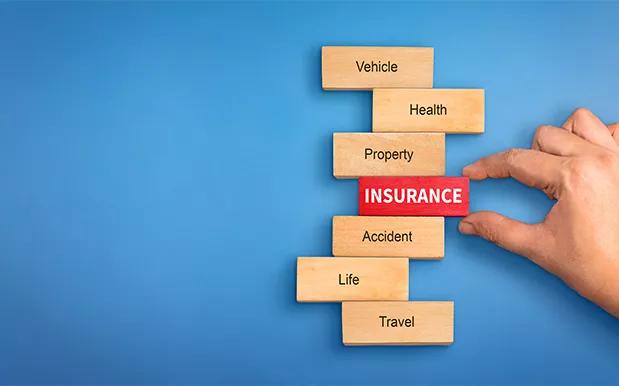Life insurance is a financial product designed to provide financial protection for your loved ones in the event of your death. While many people understand the basics of life insurance, terms such as “in force” can be confusing. Understanding the concept of life insurance in force is important for policyholders and those considering purchasing life insurance. Knowing what this term means and how it affects your policy can help you make better insurance decisions.
In this article, we’ll explore what it means to have life insurance in force, how it affects your policy, and why it’s an important concept to understand. We’ll also discuss the different types of life insurance, how policies remain in force, and what you can do to keep your insurance in force.
What does “in force” mean in life insurance?
In force life insurance definition
In life insurance, the term “in force” refers to a policy that is currently in force and providing coverage. A life insurance policy is considered in force if the premiums have been paid and the insurance company has not cancelled or terminated the policy for any reason.
During the period that a life insurance policy is in force, if the policyholder dies, his or her beneficiaries are entitled to receive a death benefit. As long as premiums are paid on time and the policyholder adheres to the terms and conditions set out in the policy agreement, the policy remains in force.
For example, if you purchase a 20-year term life insurance policy and continue to pay premiums, the policy is in force for that period. If the policyholder dies within 20 years, the beneficiaries will receive a death benefit.
How does life insurance stay in force?
A life insurance policy can only remain in force if the necessary requirements are met, the most common requirement being that the premiums are paid on time. The specific requirements depend on the type of life insurance you have. Let’s explore the different types of life insurance and how they affect the policy status.
Importance of keeping a life insurance policy active
1. Ensure financial security for your beneficiaries
The main reason to buy active life insurance is to provide a death benefit to your beneficiaries. If your policy lapses, your loved ones may not have the financial support they need after your death. Therefore, it is crucial to ensure that your policy remains active by paying your premiums on time and adhering to the terms and conditions set by your insurance provider.
2. Avoid policy lapses or cancellations
One of the most common mistakes policyholders make is letting their life insurance policies lapse. A lapse occurs when a policyholder fails to pay their premiums, which can result in the termination of the insurance. If your policy lapses, it will no longer be in effect and your beneficiaries will not receive a payout upon your death. Keeping your life insurance active means you avoid the risk of cancellation and ensures you have ongoing coverage.
3. Ensure benefits and riders are easily accessible
Many life insurance policies come with additional benefits and riders, such as accelerated death benefits, critical illness coverage, or disability benefits. You can continue to use these extra features as long as your policy remains active. If your policy lapses, these additional benefits may no longer be available, leaving you without significant coverage when you need it most.
4. Build Cash Value in a Permanent Life Insurance Policy
For permanent life insurance policies (such as whole life or universal life), keeping the policy active allows you to build cash value over time. This cash value can be pledged or used to pay premiums. If the policy lapses, you lose the cash value and any growth potential.
How to “get started” with life insurance
When you purchase life insurance, the policy starts when certain conditions are met. Here is an overview of how a life insurance policy starts:
1. Application and Underwriting Process
The first step in getting life insurance is to complete the application process, which includes providing personal information, medical history, and lifestyle details. Based on this information, the insurance company will assess your risk level through the underwriting process. The insurance company may require a medical exam, blood tests, and other documents to determine the terms of the policy, including the premium rate.
2. Policy Issuance
Once the underwriting process is complete and the insurance company approves the application, the policy is issued. At this point, your life insurance officially starts. The insurance company will send you the policy documents outlining the coverage, premiums, and any additional features or riders.
3. First Premium Payment
For the policy to start, the first premium must be paid. The policy is not in effect until the first payment is received. After the first payment, the policy will continue to be in effect as long as subsequent premiums are paid according to the policy schedule.
4. Ongoing Premium Payments
Once a policy is issued, it remains in effect as long as premiums are paid on time. These premiums are usually paid monthly, quarterly, or annually, depending on the terms of the policy. If premiums are not paid, the policy may lapse, meaning the policy is no longer in effect and coverage ends.
Risk of a Life Insurance Policy Lapping
One of the biggest concerns for life insurance policyholders is the possibility of a policy lapsing. A lapsed policy is no longer in effect, which means you will not be covered if you die. Here are some common reasons why a life insurance policy lapses:
1. Nonpayment of Premiums
The most common reason a policy lapses is failure to pay premiums on time. Life insurance premiums are usually due on a regular basis (monthly, quarterly, or annually). If a policyholder fails to pay premiums multiple times, the policy may lapse after a grace period. This can happen due to financial difficulties or simply forgetting to pay.
2. Insufficient Funds in the Policy’s Cash Value Account
For permanent life insurance policies, such as whole life or universal life, a lapse can occur if there are insufficient funds in the cash value account to pay the policy’s premiums. If you have a permanent policy that accumulates cash value, this cash value can be used to pay premiums if you are unable to pay them. However, if the cash value is depleted or you have taken out a loan against the policy, the policy is at risk of lapsing.
3. Failure to Renew or Convert
Some types of term life insurance policies have an expiration date. If you fail to renew or convert your policy before it expires, the policy will lapse and will no longer be in effect. If you need continued coverage after the policy expires, be sure to review your term life insurance policy and arrange to renew or convert it.
4. Changes in Health or Lifestyle
Some policies have provisions that may cause the policy to lapse if the insurer discovers a significant change in the insured’s health or lifestyle that was not disclosed during the underwriting process. This could include things like significant weight loss or gain, smoking, or other lifestyle changes that increase the insurer’s risk.
How to Keep Your Life Insurance Active
1. Pay Your Premiums on Time
The most straightforward way to keep your life insurance active is to make sure you pay your premiums on time. Set reminders or automate payments to avoid missing any due dates. If you are experiencing financial hardship, contact your insurance company immediately to discuss payment options or adjustments.
2. Review Your Policy Regularly
Review your life insurance policy regularly, especially during major life events (e.g., marriage, divorce, having a child, etc.). This ensures that the policy still meets your needs and that you continue to receive the coverage you need.
3. Maintain Sufficient Cash Value (For Permanent Policies)
If you have a permanent life insurance policy, monitor your cash value account to ensure that there are enough funds in it to pay your premiums. If you are withdrawing or borrowing from your policy, be aware of the impact this may have on your coverage.
4. Reinstate a Lapse Policy
If your policy lapses, it may be possible to reinstate it. Most insurance companies offer a reinstatement period, usually a few years after the policy lapses, during which you can pay past due premiums and reinstate your coverage. However, reinstating a lapsed policy may require you to prove insurability, which means you may need to undergo a medical exam.
5. Convert your term policy
If you have a term life insurance policy, check to see if it includes a conversion option. This allows you to convert your term policy to a permanent policy before the policy expires, keeping your coverage in place for as long as you need it.
Conclusion
An effective life insurance policy is essential to providing financial protection for you and your beneficiaries. Understanding the concept of effective life insurance, tracking premiums, and knowing how to avoid a policy lapse are essential to ensure your coverage remains in place. Regularly reviewing your policy, understanding the terms, and staying on top of premium payments will help ensure your life insurance continues to provide the necessary protection for your loved ones.
By taking proactive steps and staying informed, you can ensure your life insurance remains in place, providing you with long-term peace of mind and ensuring your beneficiaries are financially supported after your death.



























